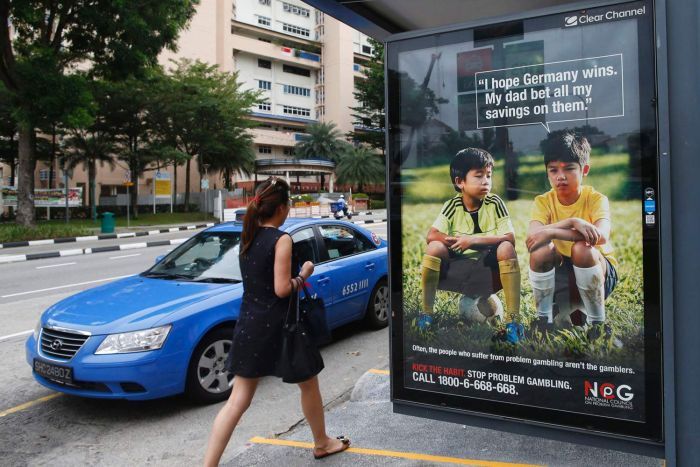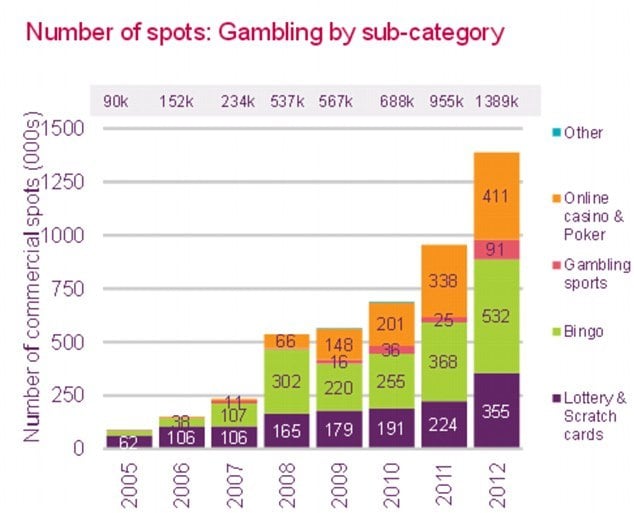A Contemporary Perspective on Gambling Advertising

The Evolution of Gambling Promotions in Modern Media
Gambling and advertising have been intrinsically linked for centuries, with both adapting to cultural shifts and regulatory landscapes. As gambling regulations and societal attitudes have evolved, so too have the methods and strategies used to promote it. Today, gambling advertisements reach audiences through an ever-expanding array of platforms, reflecting broader trends in media consumption and marketing.
Current Methods and Unusual Tactics in Gambling Advertising
Gambling marketing encompasses any form of promotion for betting and wagering activities, whether through brick-and-mortar casinos, online operators, or national lotteries. These adverts now saturate various channels, including sports sponsorships, television spots, digital banners, and even more unconventional approaches:

Sponsoring football club shirts is now commonplace, with teams across Europe-like West Ham United-showcasing gambling brands front and center. Yet, some campaigns are memorable for their audacity. In 2005, an online casino, GoldenPalace.com, paid an American woman $10,000 to have their logo tattooed on her forehead-a headline-grabbing stunt. GoldenPalace.com became notorious for such guerrilla marketing, including paying streakers to display temporary tattoos at major sporting events.

While these stories capture headlines, much of the industry’s advertising is more conventional, focusing on welcome offers, jackpot alerts, or highlighting new gaming features.
A Global Overview of Gambling Advertising Laws
Just like gambling itself, laws governing promotional activities differ markedly around the world. Jurisdictions set independent standards on whether advertisements are allowed, where they appear, and what they can claim:
- In the United Kingdom, only operators physically based in the UK can advertise without special approval; offshore firms must secure proper licensing. Rule changes in 2007 led to a surge in gambling ads on daytime television, though regulations continue evolving through oversight by organizations like the Advertising Standards Authority.
- Australia regulates gambling promotions at the state and territory level. Many areas mandate responsible gambling messaging and ban any language exaggerating the chances of winning. Notably, Victoria recently implemented a ban on gambling ads in and near public transport and schools.

- In the United States, restrictions have fluctuated alongside debates over gambling legality itself. In the early 2000s, federal authorities cracked down on both domestic and international gambling ads, wary of misleading the public about legal status. While outright bans are rare, advertisers and media outlets often tread carefully to avoid legal risk.
- Elsewhere, rules are equally diverse. Spain limits gambling commercials to late-night hours and prohibits product placements. Scandinavian countries, including Norway, are reviewing their relatively relaxed guidelines after studies revealed widespread exposure to unauthorized online betting promotions.
Assessing the Impact of Gambling Advertising
The effectiveness and societal impact of gambling advertisements have been debated by policymakers and researchers alike. Studies consistently show that these ads are quite successful in attracting new and returning players. However, measuring their direct role in triggering problem gambling remains complex.
Research suggests that advertising can encourage those already predisposed to gambling to continue or increase their activities, rather than serving as the primary cause of addiction. For example, one 2007 study concluded that advertising does contribute to gambling problems, but its influence is typically outweighed by other factors. Another study found that, while advertising was not cited as the root cause of gambling issues among problem gamblers, it triggered impulses and made it harder for those struggling to abstain.

Many nations require all gambling promotions to incorporate clear disclaimers, such as encouraging responsible play or providing contact details for support services.
Public Backlash and Anti-Gambling Messaging
A key criticism of gambling advertising is its potential to “normalize” the activity, especially among impressionable audiences like children. Critics contend that such widespread exposure may foster the false impression that gambling is an ordinary part of adult life.
Some campaigns have been condemned for suggesting financial gain through gambling, such as a UK Health Lottery ad banned for implying players could erase mortgages through their winnings, or a Sky Vegas commercial prohibited for glamorizing life-changing wins and risk-taking.

In response, advocacy groups and governments have launched countermessaging. One notable example is a 2014 campaign by the National Council of Problem Gambling in the U.S., which featured a child admitting that their savings had been bet on the outcome of the World Cup-a poignant reminder of the risks associated with irresponsible gambling.

Projected Trends and the Path Forward for Gambling Advertising
While many countries have relaxed advertising regulations in the past decade, future policy is likely to focus on curtailing access for vulnerable groups-particularly children. For instance, by 2013 the number of gambling ads seen on UK television had skyrocketed by more than 1,400% since 2005. Alarm bells were raised when studies estimated that children were exposed to 200 gambling commercials per year, fueling concern that advertisements may contribute to unhealthy normalization.

In today’s digital landscape, major platforms are developing unique policies. Google permits gambling ads in certain regions and under strict guidelines, while Facebook enforces tougher restrictions, allowing such promotions only with special approval.
As both technology and advertising evolve, governments struggle to enact timely and effective regulations. It’s anticipated that ongoing legal adjustments will continue attempting to balance market interests, social risks, and new advertising strategies-always chasing the fast-moving realities of the gambling sector.
Ultimately, as long as betting remains a legal pursuit, marketers will keep finding innovative ways to reach consumers, ensuring the conversation around responsible advertising remains as dynamic as the industry itself.













